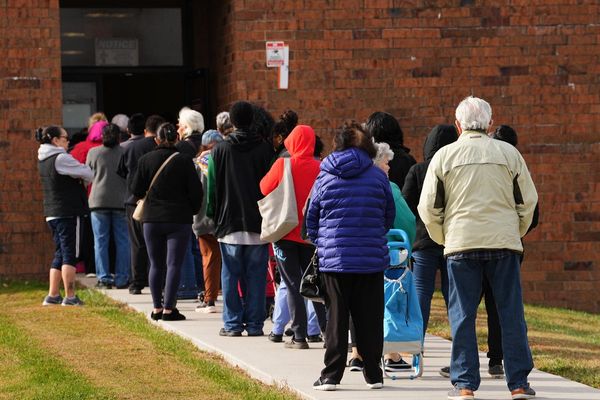

Since publishing a Washington Post article (paywall-free version here) about the Uniting for Ukraine private refugee sponsorship program, I have gotten a variety of questions about how the program works, particularly from people interested in possibly becoming sponsors. Interest was further heightened by the White House's recent expansion of private sponsorship to include four Latin American countries: Cuba, Nicaragua, Venezuela, and Haiti.
In this post, I go over a few of the most common questions and misconceptions I have seen. The post is not a comprehensive guide to becoming a sponsor. Still less does it try to address all the moral and policy issues at stake in these programs (though I have written about the latter in various previous writings, such as here and here). But I hope it can be useful nonetheless.
I. Is the Uniting for Ukraine program capped at 100,000 participants?
Months ago, President Biden said the US would seek to take in 100,000 Ukrainians fleeing the Russian invasion of their country. This has apparently led many people—both Ukrainians and potential American sponsors—to assume that the Uniting for Ukraine program is capped at 100,000 participants. But, in reality, there is no such cap. The figure of 100,000 was just political rhetoric, not a legally binding constraint.
This is actually one of those rare instances where a government policy has outperformed aspirational promises, as opposed to fallen short of them. As of December, 94,000 Ukrainians had already entered the country under the policy, and tens of thousands more had been authorized to come, though not yet arrived. By now, the 100,000 figure has almost certainly been exceeded.
While there is no numerical cap on Uniting for Ukraine participants, the newly announced program for Cubans, Nicaraguans, Venezuelans, and Haitians does have such a restriction: a cap of 30,000 per month from all four countries combined. However, applicants who miss the cutoff one month can potentially be admitted the next.
II. Do participating migrants have to live in their sponsor's house?
The answer to this unexpectedly common question is "no." There is no such rule, and admittedly anecdotal evidence suggests that most sponsorees do not in fact live in their sponsors' homes, and especially not for more than a brief period after arriving in the US. Participants in private sponsorship programs generally seek out rental housing, as have most other immigrants throughout American history. They can afford to do so, because they are legally authorized to work in the United States, and most seek to quickly enter the labor force (which is very feasible given severe labor shortages in many sectors of our economy).
Far from being required to live with their sponsors, migrants are not even required to take up residence in the same city or state. For example, our own sponsorees now live in Florida, despite the fact that my family and I live in Virginia. The family we sponsored chose Florida because they have friends there (previous Ukrainian immigrants) and because of housing and job opportunities.
III. What are the financial obligations of sponsors?
The answer to this question isn't completely clear. The US Citizenship and Immigration Service indicates that sponsors should be able to assist with housing, health care, and various other basic needs. If you interpret this broadly and literally as requiring sponsors to pay for all such expenses, the cost will be prohibitive for all but the very wealthy. However, USCIS regulations do not require the provision of any specific amount of assistance. And, in practice, neither the government nor program beneficiaries can sue sponsors for failure to provide a specific sum. Thus, the amount of financial support is largely left up to sponsors and beneficiaries to determine among themselves.
Would-be sponsors do have to file a form that, among other things, indicates the amount of financial resources they have. USCIS can reject people they deem as having insufficient funds. In practice, however, anecdotal evidence indicates such rejections are rare, and acceptance certainly is not limited to the very wealthy.
Potential sponsors should not take this situation as a license to withhold assistance they have promised to give. As I see it, if you promised to give people fleeing war and oppression a given sum of money or other assistance, you are morally obligated to keep that promise, even if they cannot go to court to enforce it.
Sponsors should be honest about what support they can and cannot give. But, ultimately, the biggest gift sponsors can offer migrants is not money but the chance to live in a society with vastly greater freedom and opportunity than the one they fled.
What is true of funds is also true of logistical and other assistance. Official guidelines on this are vague and general, generating little in the way of precise, legally enforceable obligations. But many newly arriving migrants can benefit from help with navigating bureaucratic and other difficulties, which sponsors can often provide even if they cannot give much money.
IV. How can I begin the process of potentially becoming a sponsor—or a sponsoree?
If you already have connections with eligible citizens of one of the five covered countries who want to be your sponsorees, you can file Form I-134A at the USCIS website (one for each sponsoree, even if they are members of the same family). Remarkably—especially by the sclerotic standards of US immigration bureaucracy—approval often comes very quickly, as fast as within a week or two of filing. Ours took only nine days.
If you are interested in being a sponsor, and want to be connected with potential sponsorees, the best way to start is to register and create a profile at the Welcome.US website, a private nonprofit that facilitates connections between sponsors and eligible migrants. They have a site for potential sponsors and participants in Uniting for Ukraine program (which is how my wife and I found our own sponsorees), and are in the process of setting up a similar site for sponsors and migrants for the four Latin American countries.
Their Uniting for Ukraine site has instructions and communications options in Russian and Ukrainian, as well as English. I hope and expect the site for the four Latin American countries will also eventually be accessible in Spanish and French.
The Welcome.US Ukrainian site allows potential migrants to set up their own profiles and contact potential sponsors on the site directly. I am not sure if the site for the other four countries yet has this capability. But hopefully it will soon.
The post Addressing Some Common Questions and Misconceptions About Uniting for Ukraine and Other Private Migrant Sponsorship Programs appeared first on Reason.com.







